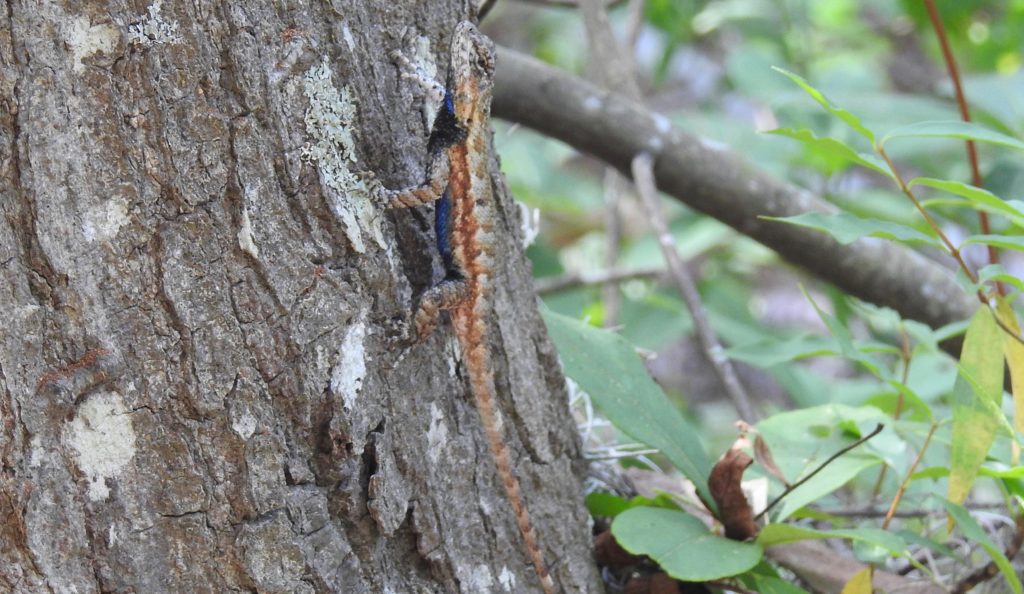
Mary Reid Barrow
Can you find a fence lizard on the pine tree in the photo above?
Terri Gorman. LRNow’s office manager, spotted the lizard and took its photo when we were on a walk along the trail at the Narrows in First Landing State Park.
As we watched the lizard move about, we would sometimes lose the critter, it was so well camouflaged against the pine tree bark. It was so easy to understand why the fence lizard’s other common name is pine lizard!
While we watched it and Terri was trying to take its photo, the lizard behaved as I later read it would, by going round the tree as it climbed. This wily lizard not only relied on its pine tree camouflage but also on its climbing skills to befuddle us.
I also read that as a last resort, a fence lizard might play dead to further befuddle a predator.
This brown, gray and black lizard is known as a spiny lizard because it has rough scales. It is the only spiny lizard in our area. The others are our old familiar smooth-scaled skinks, so you won’t ever have trouble identifying a fence/pine lizard, that is, if you can see it. They are common here but just not seen often.
On the other hand the male lizard is not shy and doesn’t rely on camouflage when it comes to protecting its territory from another male. The male has blue scales on the side of its throat and belly that that it will flash at other males to threaten them. To look even scarier, it also will bob its head and do warning push-ups.
Fence lizards range between 4 and 7 inches long and dine on insects and snails. In turn, snakes, birds and stray cats prey on them.
The lizard, whose Latin name is Sceloporus undulatus. got the common name, fence lizard, years ago because it would often be seen sunning on farm fence posts. But if only the farmer’s eyes had been able to pick it out on a pine tree, the lizard’s favorite hangout, pine lizard certainly would have been its only common name.
Seeing the lizard recently on our walk reminded me of a walk I took with my young grandson years ago along that same trail. I saw a fence lizard for the first time when I looked down and saw one clinging to the sleeve of Reid’s blue fleece jacket!
We had no idea how it got there. I told Reid to walk quietly over to a nearby tree, which just happened to be a pine, and put his arm against the tree. He did and before we knew it, the lizard was gone.
And try as we might, we were never able to see our well camouflaged izard again.
Do you have a favorite tree, a secret tree grove or neighborhood climbing tree that you love? Let me know your stories about trees, the critters who live in them and the insects that dine on them. Send an email to maryreid@lrnow.org